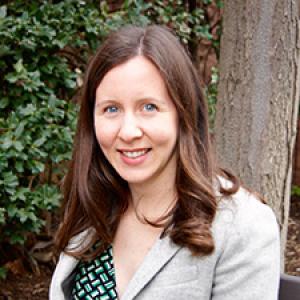Development Pros: You Don’t Need to be a Finance Expert to Use Catalytic Funding
Image

An abridged version of this article was published in Devex. Read it here.
By Vanessa Holcomb Mann and Jessamy Nichols, USAID INVEST
Donors like USAID have added a powerful tool to their toolbox: catalytic funding.
Catalytic funding enables investments that generate positive impact, and it is helping development agencies increase the volume of capital flowing into post-conflict, frontier, and emerging markets. Donors are turning to this approach more and more as they work to address the world’s most daunting challenges. With relatively small amounts of funding, donors can channel private capital flows into local companies that provide jobs, clean energy, food, healthcare, transportation, and the many other goods and services that help a community thrive.
While investment is a powerful tool, most development staffers are not finance experts, nor should they be. Their role is to make key decisions to guide the flow of capital so that it translates to impact. They do not need to know how to structure a blended finance fund or debt vehicle on their own. For that expertise, they can turn to a deep bench of fund managers and investment advisors who understand the type and amount of donor capital that will get private investors off the sidelines and into high-impact investments. For example, USAID’s Finance and Investment Network has more than 350 member firms, including fund managers and firms advising or operating investment vehicles. Even though fund managers are at the ready, there are a few things USAID staffers and their partners need to know if they want to use catalytic funding wisely.
USAID INVEST, an initiative of the Private Sector Engagement Hub at USAID that mobilizes private capital for better development outcomes, is now testing a portfolio of 15 catalytic funding approaches in partnership with its USAID Mission partners. These include providing support that enables fund managers to incorporate first-loss tranches into their funds as well as different types of catalytic contributions that help fund managers launch new vehicles, scale existing fund models, or reduce transaction costs for investors. Based on what we have learned, there are four key considerations for USAID staffers and their partners who want to use catalytic funding: Donor support should ultimately deepen local markets; it must be “additional”; it must get investors off the sidelines and crowd in private capital; and it must have a path to sustainability so that it can carry on without donor support in the long term.
1. Support approaches that deepen markets in the long term
Most of the investment proposals that come across our desks align in some way with USAID’s development objectives; for example, they demonstrate that they will increase energy access, improve infrastructure, or create jobs. Therefore, the question is not just about whether an approach has the potential for immediate impact; but, it’s also about what the long-term impact of a given deal or investment will be on the broader ecosystem. Is it a pioneer transaction that will pave the way for similar investments or businesses? Will it have ripple effects that benefit businesses across a larger value chain? Could support for this business or project actually do more harm than good by crowding out other investors?
Take, for example, Endeavor South Africa, an NGO developing its second Harvest Fund. Endeavor SA selects and supports growth entrepreneurs whose businesses create positive ripple effects throughout the economy. Over the past two years, the 25 SA Endeavor entrepreneurs collectively created more than 4,560 jobs and 1.8 billion rand in revenue. The fund’s unique co-investment mandate works alongside external, lead investors ensuring Endeavor’s investments augment and do not crowd out. Furthermore, Endeavor Harvest Fund II’s carry — the profit share of the fund — will be re-invested back into Endeavor, enabling Endeavor SA to support additional high-impact entrepreneurs. By supporting Endeavor Harvest Fund II with a catalytic contribution towards operating costs that will also help reduce management fees, USAID’s Southern Africa Regional Mission is helping to address the financing gap facing rapidly growing entrepreneurs in the region. It is also helping Endeavor SA build a successful track record that will draw other investors to the market in the future.
2. Ensure additionality
There are different ways donors like USAID can ensure that their catalytic funding approaches have “additionality.” According to the Donor Committee for Enterprise Development (DCED), “additionality is the net positive difference expected to result from a donor-business partnership,” in other words, the positive change that would not happen without public support.
In the context of blended finance, donor support is additional if it increases the speed, impact, or scale of transactions, or, in some cases, makes transactions happen that wouldn’t be possible otherwise. For example, donor support can:
- Increase the viability or credibility of a fund;
- Enable access to hard-to-reach investors who would otherwise be unrealistic targets;
- Accelerate a capital raise by making an opportunity more attractive; or
- Facilitate fund structuring, investor outreach, or a capital raise, often enabling greater scale.
Additionality ensures public funding will add distinct value and improve outcomes, making it an important lens for donors and their partners to use in identifying funds and vehicles to support. The other side of the “additionality coin” is considering whether the transaction would occur with the same impact regardless of donor support and ensuring that these donor interventions do not displace private actors. When used well, donor funding can make a big difference in a fund’s viability. For example, if a fund manager wants to raise more capital or expand its investment portfolio to a new sector, it can only do so if it has sufficient staffing and the costs are not prohibitive. Injecting donor funding alongside commercial capital to cover operational costs makes it possible for funds to test out new models tailored to specific contexts and expand their efforts, generating broader financial and social returns.
3. Get investors off the sidelines
When assessing a fund’s ability to mobilize additional capital, INVEST asks two questions: How attractive is the opportunity to different types of investors right now? Would catalytic support make it attractive to a new set of investors?
For example, if a donor were to provide catalytic funding to reduce risk for investors, could it shift the risk/return profile enough to attract new investors? If donor support made it possible for a fund to increase its capital raise target or reduce management fees, as in the Endeavor South Africa example above, would it attract investors who would otherwise pass on the opportunity? Asking these questions can help donors and their partners assess whether an approach will crowd in private resources and increase its impact.
Many of the traditional investment models used in places like Silicon Valley are not viable in emerging or frontier markets. For this reason, some of INVEST’s portfolio is dedicated to testing new concepts and first-time funds, gauging market reactions to new investment products, such as its partnership with Linea Capital, whose model may attract investors leery of the exit timeline on more traditional equity investments. Linea seeks to establish and scale a revenue-based financing approach, in which investments are repaid over time through a fixed percentage of a company’s future revenues. By providing a source of capital that doesn’t take away ownership from existing shareholders, it also meets the needs of many southern Africa growth-stage companies.
4. Prioritize sustainable approaches
When evaluating funds or capital structures, donors and their partners should assess the sustainability of the model to understand how it can be viable without donor support in the future. It may not be possible to gauge the long-term sustainability and self-sufficiency with perfect accuracy — and that’s okay — but there are a number of factors to consider to improve the chances of success. For example: Without catalytic funding, will the future returns still be attractive to investors? Does the fund plan to recycle a portion of its returns into future efforts?
Across the INVEST portfolio, we have seen many different approaches to prioritizing sustainability: fund managers recycling a portion of the carry into a future fund, establishing permanent capital vehicles, or planning larger funds for the future to make the fund economics work. At the same time, we recognize commercial viability is not always possible in the short or medium term. Even in developed economies, risk mitigation and concessional capital play an important role in stimulating high-impact investments. The key is to understand the plans for future sustainability in the context of the investments and the targeted impact.
Laying the foundation for long-term impact
There is no perfect formula for determining how to put catalytic funding to its best use. However, these four lenses can be helpful for decision-making.
While there’s no set formula, the new development equation is clear: donor resources are limited, but the pool of private capital is deep. By getting more investors to invest into funds and vehicles aligned with development objectives, donors like USAID can achieve greater development results, including helping more entrepreneurs and growing businesses thrive. They can also increase sustainability by building the capacity and track record of fund managers that will continue to operate and invest in emerging and frontier markets. These approaches, we hope, will lead to more resilient communities and economies around the world.
This post is made possible by the support of the American People through the United States Agency for International Development (USAID). The contents of this blog are the sole responsibility of INVEST implemented by DAI and do not necessarily reflect the view of USAID or the United States Government.


